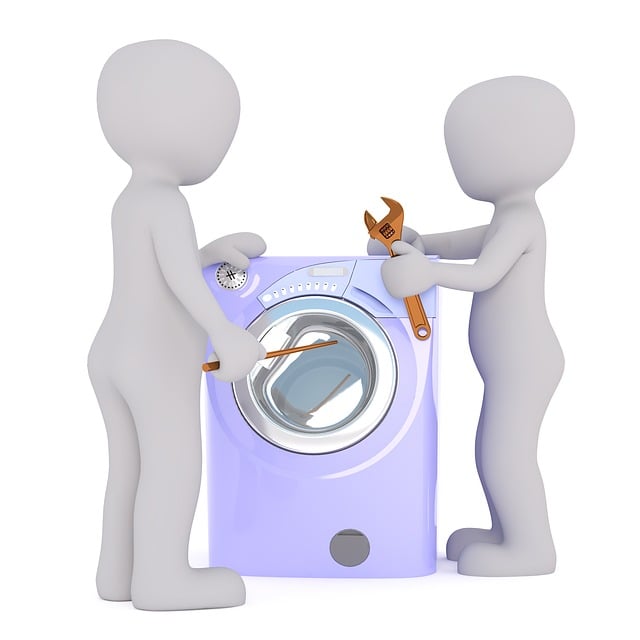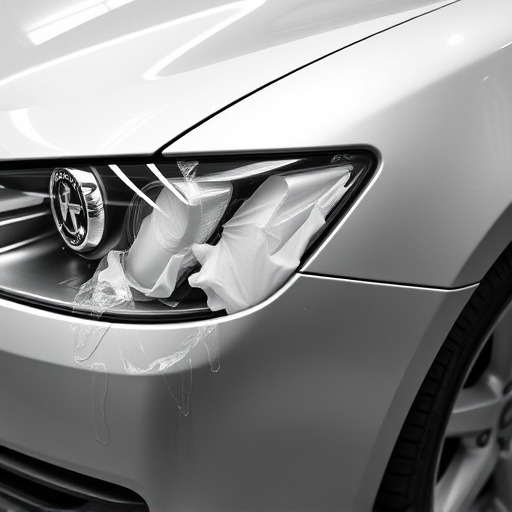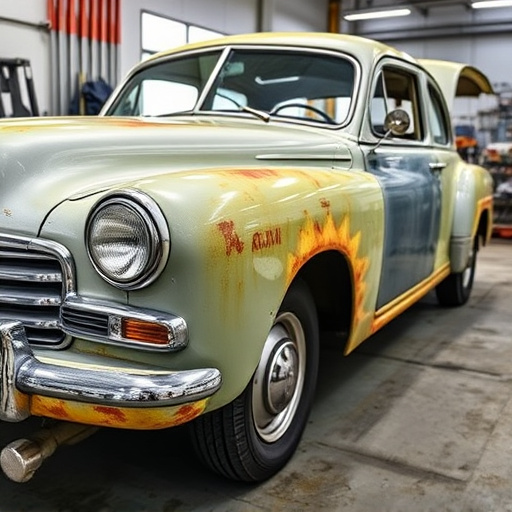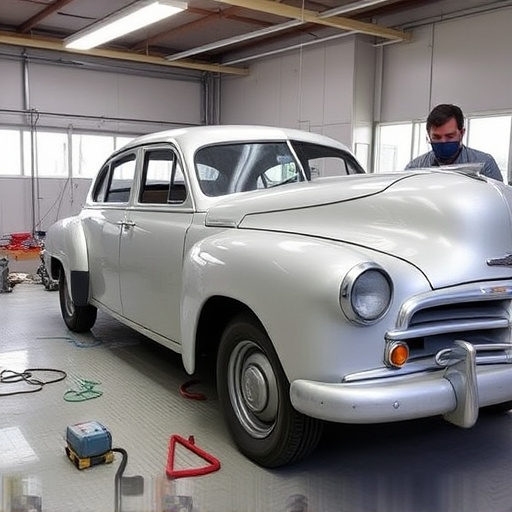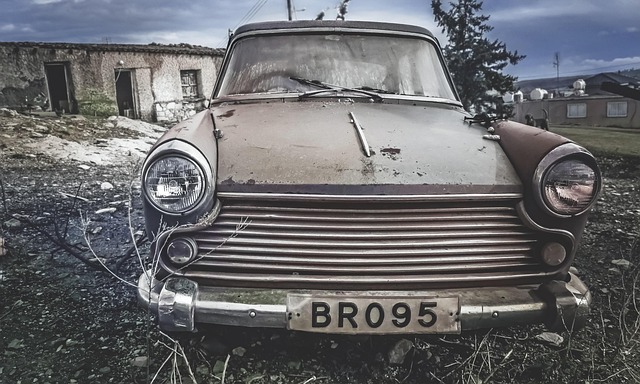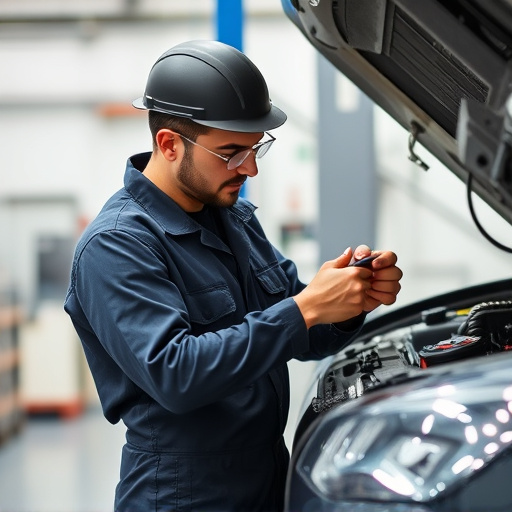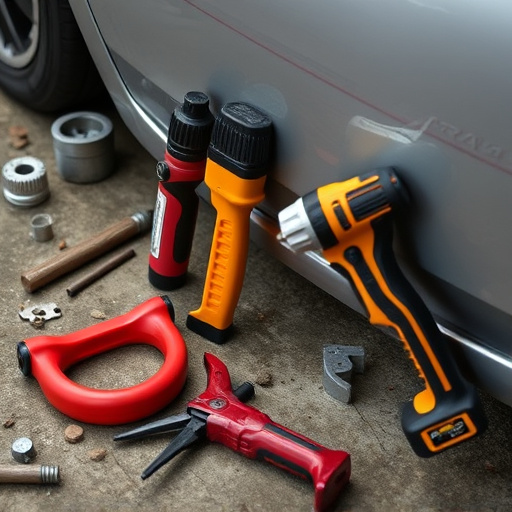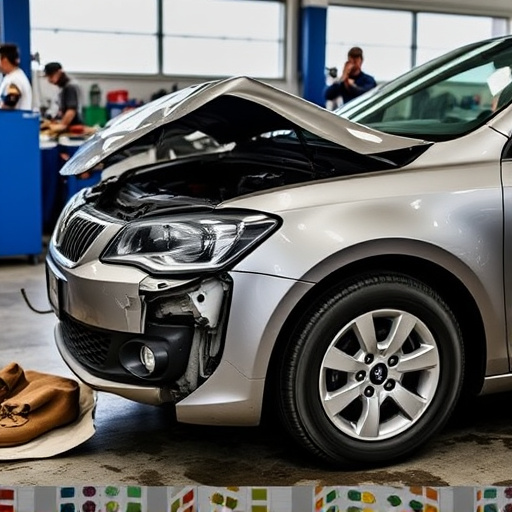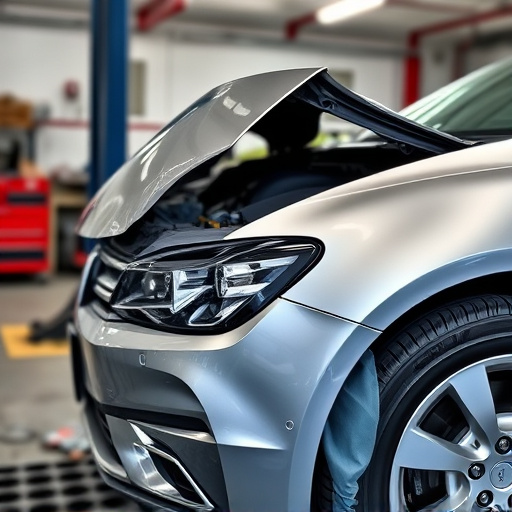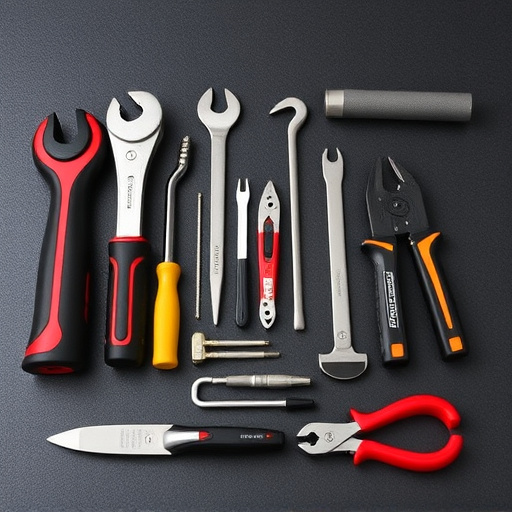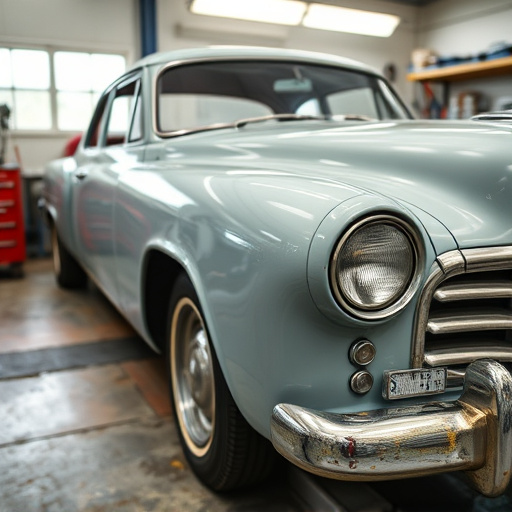Seasonal variations significantly impact car paint restoration, affecting curing times, dryness, and adherence. Extreme temperatures and humidity can cause uneven finishes or long-term quality issues. Strategic planning during specific seasons involves tailored methods like improved ventilation in humid summers or temperature control in colder months. Understanding these dynamics ensures optimal vehicle care throughout the year, maintaining a glossy finish with regular car paint restoration services, especially in regions with dramatic seasonal changes. Protecting freshly restored paint involves working in cooler periods and applying UV-protective coatings to extend lifespan and safeguard vibrant finishes.
“Enhance your car paint restoration projects with our seasonal guide. Weather conditions significantly impact car paint throughout the year, from UV rays intensifying in summer to freezing temperatures in winter. Understanding these effects is crucial for optimal results. This article offers strategic preparation tips and best practices tailored to each season, ensuring your restoration work shines all year round. Discover how to choose the right products, prepare surfaces, and execute flawless paints, regardless of the climate.”
- Understanding Seasonal Impacts on Car Paint
- – The effects of weather conditions on car paint over different seasons
- – Extreme temperatures and UV rays: friends or foes to your paint job?
Understanding Seasonal Impacts on Car Paint

Seasonal changes can significantly impact the process and outcome of car paint restoration projects. Extreme temperatures, whether scorching summers or freezing winters, can affect the curing and drying times of paint jobs, potentially leading to uneven finishes or long-term quality issues. Additionally, varying humidity levels throughout the seasons can influence how well paint adheres to the car’s surface.
When planning a car paint restoration, it’s crucial to consider these seasonal factors. For instance, during humid summers, using appropriate ventilation and ensuring optimal drying conditions becomes even more critical. Conversely, in colder months, choosing the right paints and maintaining controlled temperatures in a dedicated car body shop or auto collision center can make all the difference in achieving a flawless finish. Auto glass replacement isn’t directly related to seasonal considerations for paint restoration but understanding these dynamics allows for better overall vehicle care tailored to each season.
– The effects of weather conditions on car paint over different seasons

The changing seasons significantly impact car paint over the year. During colder months, paint may become brittle and more susceptible to chipping due to rapid temperature fluctuations and moisture buildup. In contrast, intense summer heat can cause paint to fade faster, making it more vulnerable to UV damage. Rain and humidity also play a role; consistent dampness can accelerate corrosion beneath the paint’s surface, leading to rust spots that necessitate car paint restoration.
Spring and autumn offer their unique challenges. Spring’s blooming pollen can leave unsightly stains on freshly restored paint, while autumn’s falling leaves carry acidic compounds that can etch the surface. Regular upkeep is crucial, especially in regions with extreme seasonal changes. Visiting a reliable auto repair shop or vehicle body shop for professional car paint restoration services before and after these transitions ensures your car maintains its glossy finish year-round.
– Extreme temperatures and UV rays: friends or foes to your paint job?

Extreme temperatures and UV rays can be both friends and foes to your car paint restoration project. While they contribute to the overall weathering process that gives aged vehicles a unique, vintage look, they can also cause significant damage if not managed properly. High heat accelerates the degradation of paint, leading to chipping and fading, while intense UV radiation breaks down the chemical bonds in the paint, making it brittle and susceptible to scratches.
To protect your freshly restored car paint, consider working during cooler parts of the day and applying UV-protective coatings or waxes specifically designed for automotive restoration. These measures not only safeguard your meticulous work but also extend the lifespan of your vehicle’s paint job, ensuring its vibrant and protected finish for years to come, much like preserving a delicate artwork.
When undertaking car paint restoration projects, seasonal considerations are crucial. Understanding how weather conditions, particularly extreme temperatures and UV exposure, impact paint can help ensure long-lasting results. By being mindful of these factors and choosing the right products and techniques for each season, you can preserve the vibrancy and durability of your restored paint job for years to come, keeping your vehicle looking its best regardless of the time of year.
